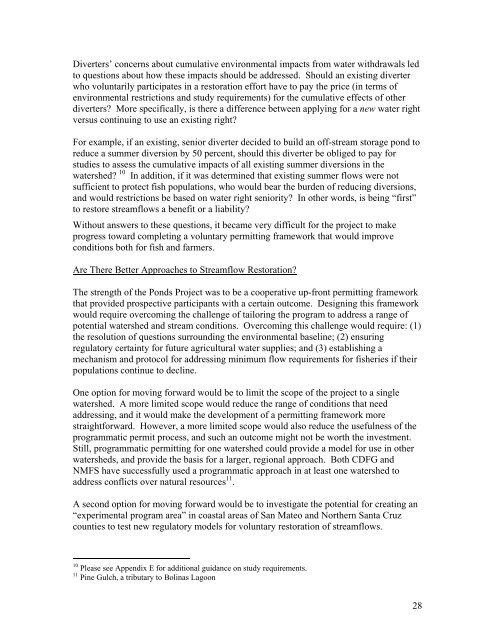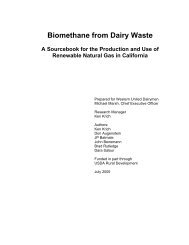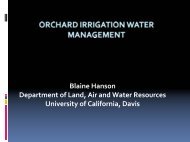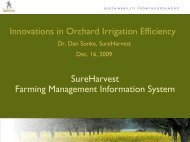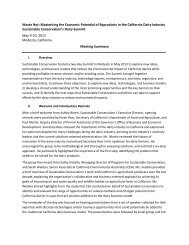THE PONDS PROJECT - Sustainable Conservation
THE PONDS PROJECT - Sustainable Conservation
THE PONDS PROJECT - Sustainable Conservation
Create successful ePaper yourself
Turn your PDF publications into a flip-book with our unique Google optimized e-Paper software.
Diverters’ concerns about cumulative environmental impacts from water withdrawals led<br />
to questions about how these impacts should be addressed. Should an existing diverter<br />
who voluntarily participates in a restoration effort have to pay the price (in terms of<br />
environmental restrictions and study requirements) for the cumulative effects of other<br />
diverters? More specifically, is there a difference between applying for a new water right<br />
versus continuing to use an existing right?<br />
For example, if an existing, senior diverter decided to build an off-stream storage pond to<br />
reduce a summer diversion by 50 percent, should this diverter be obliged to pay for<br />
studies to assess the cumulative impacts of all existing summer diversions in the<br />
watershed? 10 In addition, if it was determined that existing summer flows were not<br />
sufficient to protect fish populations, who would bear the burden of reducing diversions,<br />
and would restrictions be based on water right seniority? In other words, is being “first”<br />
to restore streamflows a benefit or a liability?<br />
Without answers to these questions, it became very difficult for the project to make<br />
progress toward completing a voluntary permitting framework that would improve<br />
conditions both for fish and farmers.<br />
Are There Better Approaches to Streamflow Restoration?<br />
The strength of the Ponds Project was to be a cooperative up-front permitting framework<br />
that provided prospective participants with a certain outcome. Designing this framework<br />
would require overcoming the challenge of tailoring the program to address a range of<br />
potential watershed and stream conditions. Overcoming this challenge would require: (1)<br />
the resolution of questions surrounding the environmental baseline; (2) ensuring<br />
regulatory certainty for future agricultural water supplies; and (3) establishing a<br />
mechanism and protocol for addressing minimum flow requirements for fisheries if their<br />
populations continue to decline.<br />
One option for moving forward would be to limit the scope of the project to a single<br />
watershed. A more limited scope would reduce the range of conditions that need<br />
addressing, and it would make the development of a permitting framework more<br />
straightforward. However, a more limited scope would also reduce the usefulness of the<br />
programmatic permit process, and such an outcome might not be worth the investment.<br />
Still, programmatic permitting for one watershed could provide a model for use in other<br />
watersheds, and provide the basis for a larger, regional approach. Both CDFG and<br />
NMFS have successfully used a programmatic approach in at least one watershed to<br />
address conflicts over natural resources 11 .<br />
A second option for moving forward would be to investigate the potential for creating an<br />
“experimental program area” in coastal areas of San Mateo and Northern Santa Cruz<br />
counties to test new regulatory models for voluntary restoration of streamflows.<br />
10 Please see Appendix E for additional guidance on study requirements.<br />
11 Pine Gulch, a tributary to Bolinas Lagoon<br />
28


